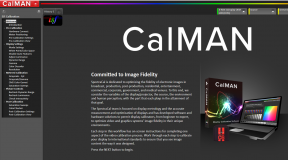Additional Features:
Toshiba CN36G97 – Channel labeling, adjustable colour temperature close to D6500, clock, sleep timer, learning remote, lock out, limited 2 size pip. Just a reminder that the SVM feature is disabled when the image adjustment is set to the Theater mode first.
Toshiba TP61H95 – The features are pretty much identical to those found on the Toshiba tube set. The convergence is of course a nine point and 56 point system. Don’t forget about the Design mode in both this unit and the tube set.
Panasonic PC29XF10A – Channel labeling, adjustable colour temperature (cool, cooler, coolest J), adjustable pseudo surround settings, clock, parental lock, sleep timer, event timer, multi-brand remote for VCR’s, LV Players and cable boxes.
Proscan PS34190 – Channel logos, preset labels, colour temperature (This set may just have the most accurate colour settings.), clock, sleep timer, parental lock outs, alarms, on screen timer, event timer. Dual antenna inputs, pay TV output, commercial skip. Automatic input recognition. Like the RCA, the remote is a multi-brand capable for VCR’s, cable boxes, audio receivers, and even Pioneer type LV players.
Pioneer SD-P5071 – Additional features include sleep timer (never used), four or nine picture channel scan (would like to use, but I don’t have cable), still picture, strobe, PIP input swap, preset viewing positions, input labeling. The new model would take away all these features and then some.
RCA 46729BA – Additional features include a basic analog PIP (good), universal remote (useful … sort of), on screen time clock, alarm timer, parental lockout, dual antenna inputs, pay TV output, detachable power cord, commercial skip, sleep timer. Advantage RCA.
Bottom Line:
RCA wins the competition very easily with 14 out of 16 categories. Am I getting rid of the wrong set? (Yes, a mistake that has been corrected now that I have come to my senses.) That is indeed the question one has to ask. What I do not mention in this comparison is the weight factor that each of the categories has. Although the RCA is the clear victor on paper, the two categories that the Pioneer came out ahead in are actually given a very heavy weighting which may ultimately give the Pioneer the edge. Pioneer comes out ahead in two categories, but the item that makes the Pioneer the winner is likely the intangibles. The bigness of the overall image is far more enthralling than the RCA. The “Cost More Money And Therefore Has To Be Better” category also plays a part. Don’t forget the “I Cannot Admit I Made A Mistake” category or the fact that the pursuit of home theatre was started by the desire for a Pioneer projection set in the first place. The fulfillment of this quest has its price which is likely that the Pioneer set has to be perfect because I always dreamed it would be. Dreams and reality can be very different. I should have bought a regular 4:3 Pioneer set before they stopped making them in 1992. I may be unusually hard on the Pioneer set, but I have noticed some improvements as I continue to tinker with the colour drivers. Image sharpness is now approaching the RCA set to such a point where the difference may just be due to the increased picture size. (Which is ultimately the desired case.) Colours are still very different from the RCA, but as I recall now, from the Perfect Vision magazine from three years back, the Pioneer representative mentioned something about the AVS disc not tracking properly on Pioneer sets given a quirk in their design philosophy. I will be going back to this article to get more insight on what the deal is. They claim the use of the blue filter is not effective given the colour decoder used in Pioneer units. The colours are now almost identical to the Panasonic XF direct view set with minor differences. I may ultimately keep both sets near me since I am liking the Pioneer less and less as time goes on. Perhaps too many negative reviews regarding the set as well. I am beginning to agree with most of the reviews that mention the picture is too noisy. Even at low sharpness settings, the background graininess is irritating. I have gotten no where with Pioneer on the set’s shadow problem. I am taking it to the top brass at Pioneer Canada and then to the Video magazines and possibly the Internet. Beyond that, nothing else left to do, but try to sell the set. Anyone willing to trade for a 52” RCA or 50” Hitachi or 48” Toshiba? Last chance for the television as I went back to London Drugs to talk to the manager about the dilemma again. He has said that he will look into to it further if he is to be believed. Nothing to lose anymore. Any additional action taken on my behalf is a bonus. An idea … small claims court … hmmm. Pioneer has now officially said that they will not do anything further to repair the television. I have responded to their letter by asking for a refund of my purchase price however I do not believe that they will respond to that request. In an article of PTV brightness levels, it has been noted that the overall brightness will drop by up to 50% within the first year of use for the set with the brightness decrease slowing down in subsequent years. I believe this is happening to the RCA set now some two plus years after its initial purchase. There is now some minor distortion in sequences with extreme brightness. This was expected. I may be rid of this television set yet. Pioneer doesn’t want to do anything for me, but perhaps the suggestion to talk to the dealer about a refund will lead somewhere. A nightmare is about to end, but what will replace this baby? I could consider a Sony (No!), a Hitachi (Possible), a Toshiba (Possible), or even that JVC (Dream on) at Eatons. No Magnetbox either. Panasonic might be interesting, but pricey though not as pricey as I thought as local list is about $3,000. No to Mitsubishi as well, not that they are not good, but I seek new challenges. Things are moving again according to the London Drugs guy as he has relayed my concerns to Pioneer Canada in Western Canada and they are also sickened by the response given by Pioneer to this problem. They are to call me once they figure out what they would like to do. I have no idea what happens next. Call it lip service or what ever. They promise that something will be done and that something is nothing. That is what Pioneer paid the London Drugs people when they brought up the shabby treatment of one particular customer. The last semi laugh is on me though as one of the letters that I wrote to a major magazine has actually seen print. The Fall 1996 issue of Stereophile’s Guide To Home Theater has printed my cautionary letter relatively intact. Although they have no idea why the set does the things I describe, the door is open now. I will have a measure of revenge against the evil of Pioneer Electronics. Video magazine will not publish this particular letter because of its extended length and they’re stand against negative product reviews. The Proscan has been in the repair shop for about one month now with the problem of the fried reset menu still puzzling the technicians. The first replacement part did not work so they continue to trouble shoot the set. One wonders how long RCA would permit a store to bill for the repairs before the company simply replaces the set outright. I’m in no large hurry to get the set back so they may take as much of RCA’s money as needed to fix the problem. Pioneer has contacted London Drugs regarding my request and their response to the article in the magazine. “Pioneer seems to feel vindicated by the fact that the magazine did not previously notice this shadowing effect.” (They were not looking for it and were likely using Pioneer playback equipment.) Unknown to Pioneer, the editors are actually going to try to recreate the problem with the Pioneer sets at their disposal so they are hardly discounting my claims. There is a challenge here. Their willingness to try to recreate the problem is sure to be of a surprise to the folks at Pioneer. (Don’t be surprised if Pioneer suddenly stops any cooperation with Stereophile magazine.) The comment that the article actually did Pioneer Electronics a world of good is a veiled attempt to claim victory from the jaws of defeat. The company is hardly going to admit that I am right and they are wrong. Their spin machine will seek to put a positive light on the developments in the letter and their possible repercussions. After giving the dealer the run-around by not answering any of his questions regarding the problem, Pioneer is still not willing to arrange for a refund on the unit. They have back handedly offered to replace my set with one of the new 80 series units which is what I had wanted a long time ago. Pioneer also seems to want to set up a strange series of conditions that must be met before they will replace the set. I can only wonder why they feel that it will be necessary to try and recreate the problem at a separate location and to have me publicly acknowledge whether I see the problem reoccur or not on the new units. Pioneer is completely unwilling to talk about a refund for the set as they have informed the dealer that no credit will be given. Perhaps it will affect London Drugs’ long term relationship with Pioneer Electronics. (I doubt it, but the Manager’s own experience with the Pioneer top brass may help.) But if Pioneer Electronics felt that the letter actually benefited them, then why this need for a public showing on my part to proclaim their 80 series units to be free of this defect? No doubt an attempt to embarrass me publicly as I have done to them. (Jeff says to get everything in writing as to what Pioneer will do or will not do to avoid any sudden changes to verbal arrangements on their part.) A simple statement on my part on some letterhead agreeing to no longer pursue the matter with Pioneer of Canada would have been sufficient, though they do not apparently think so. Everything points back to the effects of the initial article. I would think that Stereophile would actually send a copy of my follow up letter to Pioneer for a manufacturer’s response prior to printing it in order to avoid looking biased one way or another. It is also possible that Stereophile could have received additional correspondence confirming my observations from the first letter. The feeling here is that videophiles with access to a lot of equipment won’t be able to resist the opportunity to try and recreate a problem. A funny thing would be if Pioneer Japan got wind of these events and the public relations nightmare that it was causing, and removed those responsible at Pioneer Canada for allowing a simple situation to spiral out of control. I think that the solutions were simple to achieve and some have actually been proposed to POC, but they have turned it down. The situation would be much easier if they would just refund my money on the product to make me go away. My e-mail address will be known shortly to a lot more people around the continent. I have finally created an illustration of the shadow problem for distribution on the Internet. While it is still a crude representation of the problem, it hopefully gets the idea across regarding what one should be looking for when trying to identify the shadows. Interesting, the inside of the RCA is painted black to reduce internal reflections. I recall that the Pioneer was normal wood grain color as is the Mitsubishi. Perhaps that could be the next project. And so Pioneer gave up on their 1.5:1 experiment and went back to 4:3 and their new 16:9 units. The RCA set is presently not working due to some electronics problems. The image went out suddenly, but the sound remained. The set then proceeded to lock out all remote control responses as well as front panel input. The set had to be shut off with by disconnecting the power plug. I will send the unit to the U.S.A. with me and get it repaired down there. The RCA did not make it back to Canada with me. I donated the set to a church in Minneapolis. The best set I have seen so far in the projection field is the Toshiba set that I have now. There is some perverse satisfaction to knowing that the Pioneer RPTV’s no matter the high costs still seem to suffer from one sort of design defect or another.
Continued in Part 3





